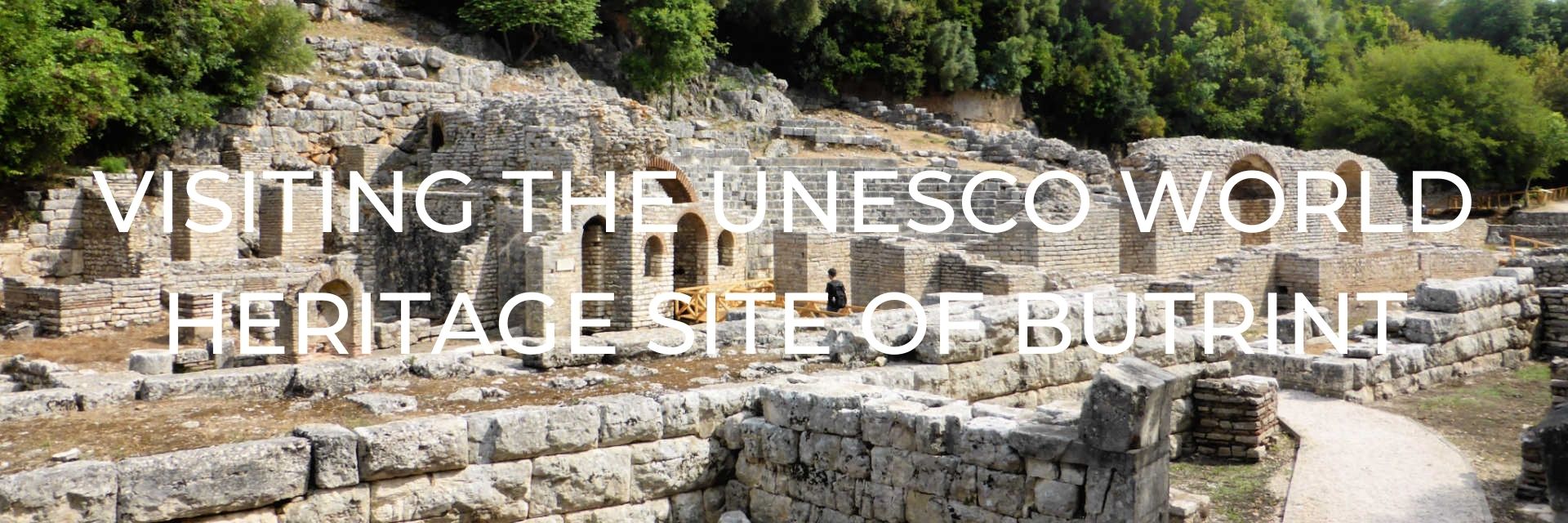
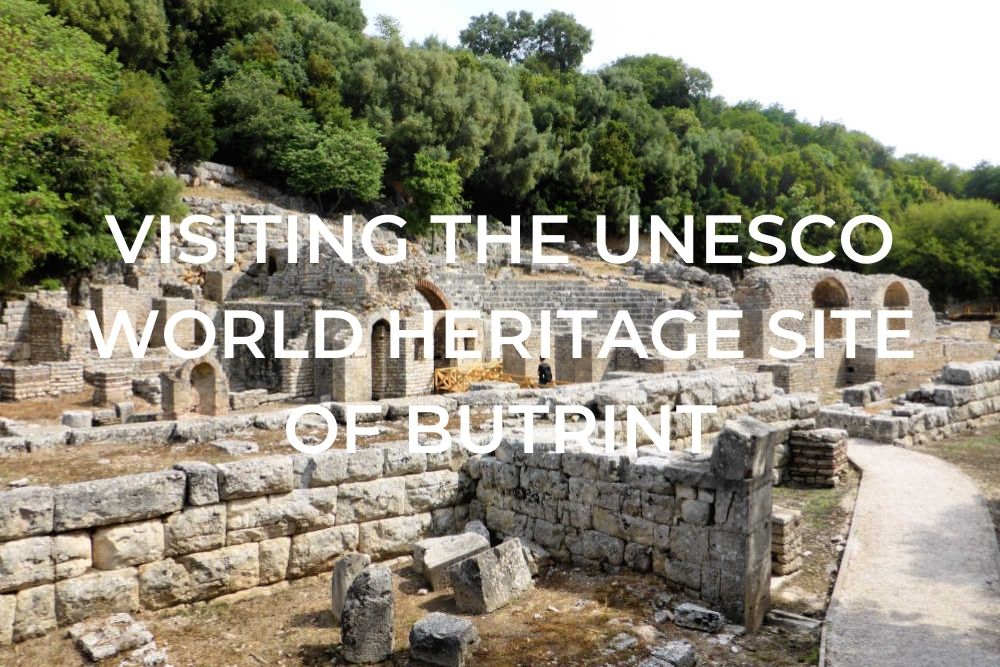
Way back in 44 BC, Caesar arrived and recognized the potential for a town on the site, even if it did require a major building program. His adopted son, Augustus, along with other family and sponsors funded the project that paid for the public works such as a new aqueduct and bridge across the Vivari Channel. It never fails to amaze me what people were able to create and build all those centuries ago. Do you suppose people will feel the same about our inventions and architecture in another 2000 years from now?
We followed this same channel in on our way to Butrint with a brief stop to look out to an island at the mouth of the channel that connects Butrint lagoon with the Corfu channel. On the island stands a fortress said to have been built by Ali Pasha in 1814 in response to Britain’s capture of Corfu and other Ionian islands.
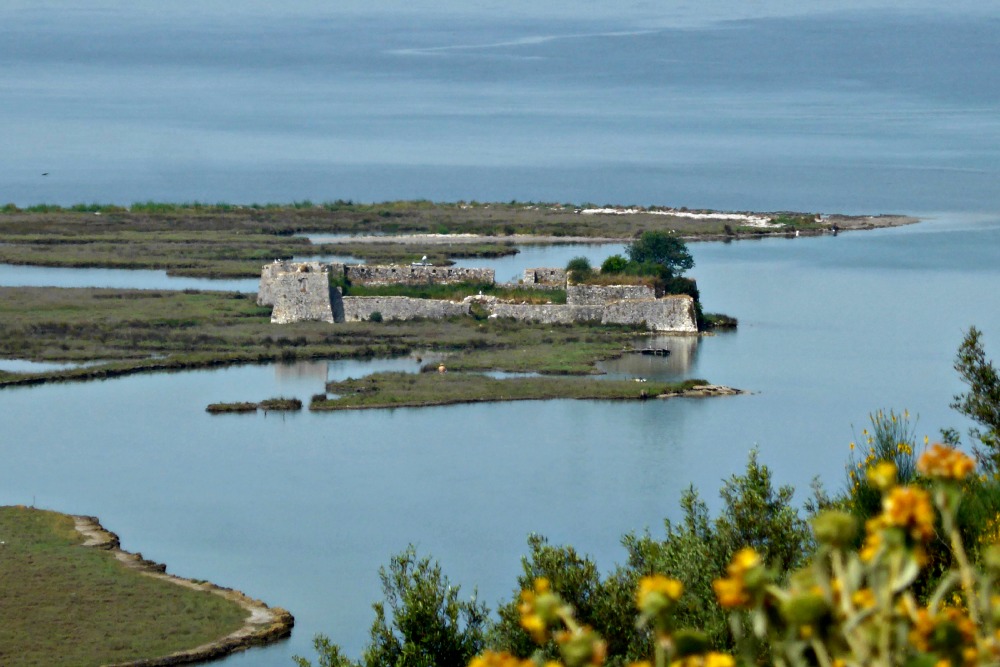
This post may contain affiliate links. Please read our full disclosure policy here.
Like so many other locations in Albania, the place we stopped also included one of the infamous bunkers.
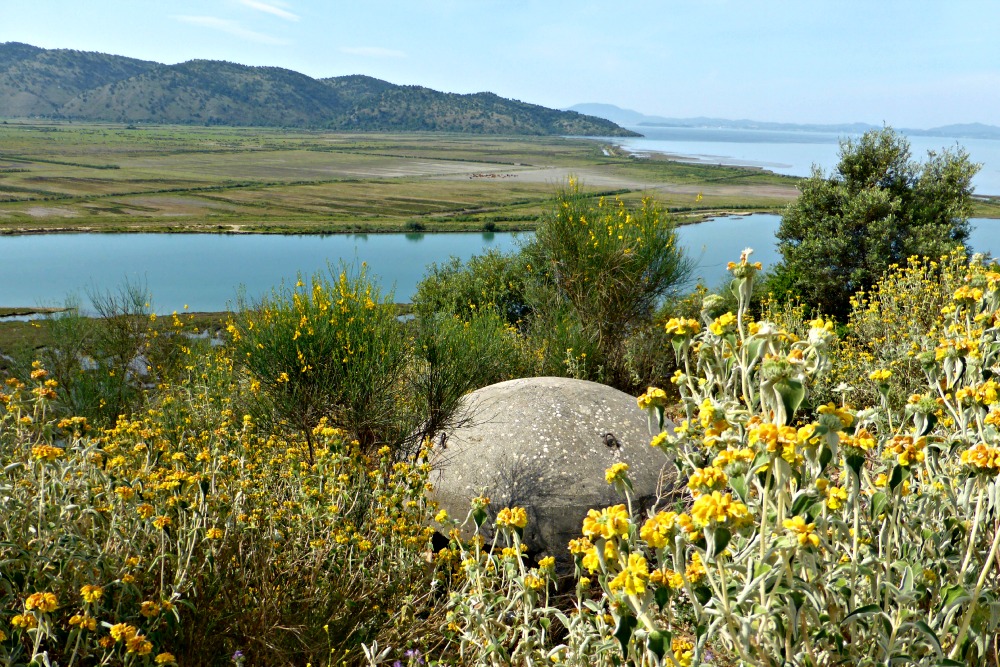
The main archaeological site at Butrint National Park is open all year from 8 am until dusk. The admission fees are very reasonable at 700 Leke (about $5.50 USD) for nationals of all countries other than Albania.
You can opt to hire a guide or do a self-guided tour using one of the books on sale at the ticket booth. We were very fortunate that our guide, Ilia, was very knowledgeable about the site and gave us tons of information as we visited the site.
There are also information panels throughout the site in Albanian and English that tell you what you are looking at and the history behind the buildings. They were the source of most of the information to come in this post.
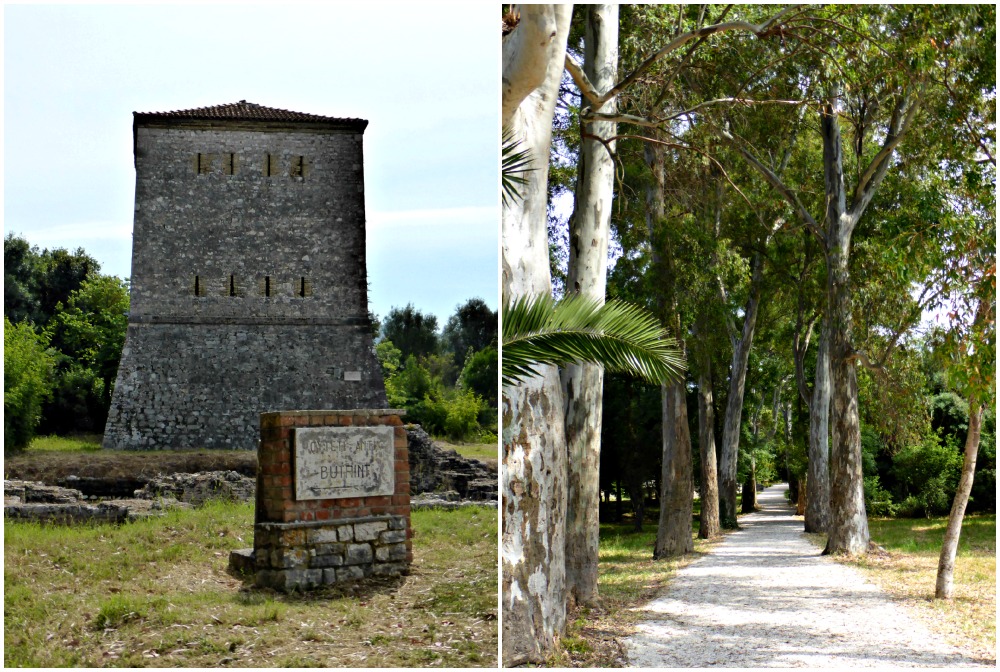
Definitely give yourself a few hours to visit this site. There are lots of buildings, walls, etc. that have been excavated along the walking trails throughout the woods in the park.
It’s a beautiful place to visit. So off we go!
THE SANCTUARY OF ASCLEPIUS
From the 3rd century BC, the Sanctuary rises on a series of terraces from an area in front of the theatre and includes a temple to the god Asclepius and a treasury to hold offerings made to the god.
Asclepius, the god of medicine, was the son of Apollo, and a marble head depicting him was found during the excavation of the theatre in 1932.
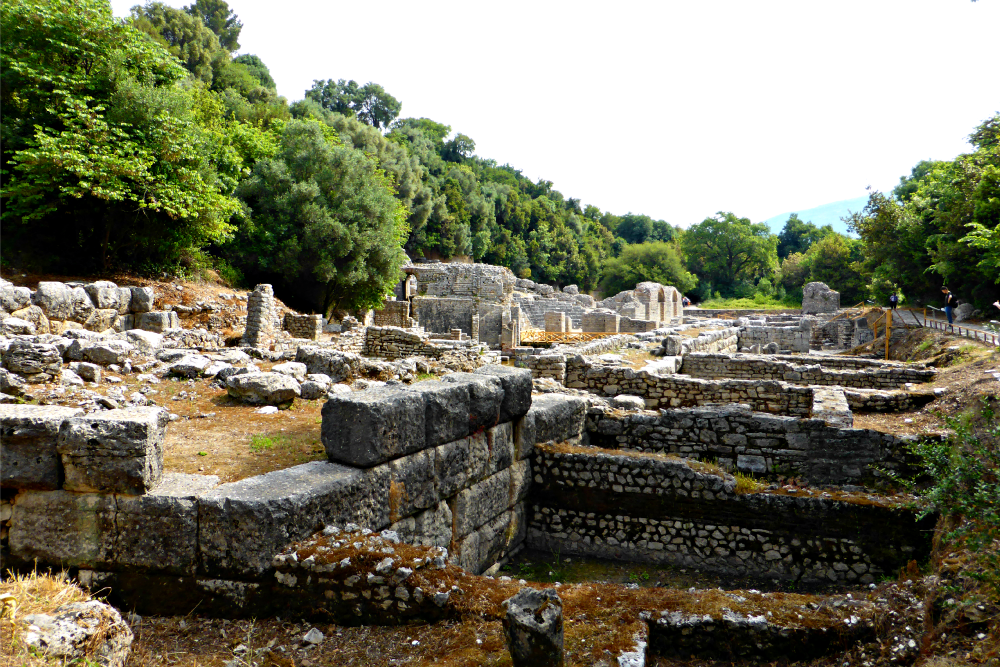
The Sanctuary of Asclepius
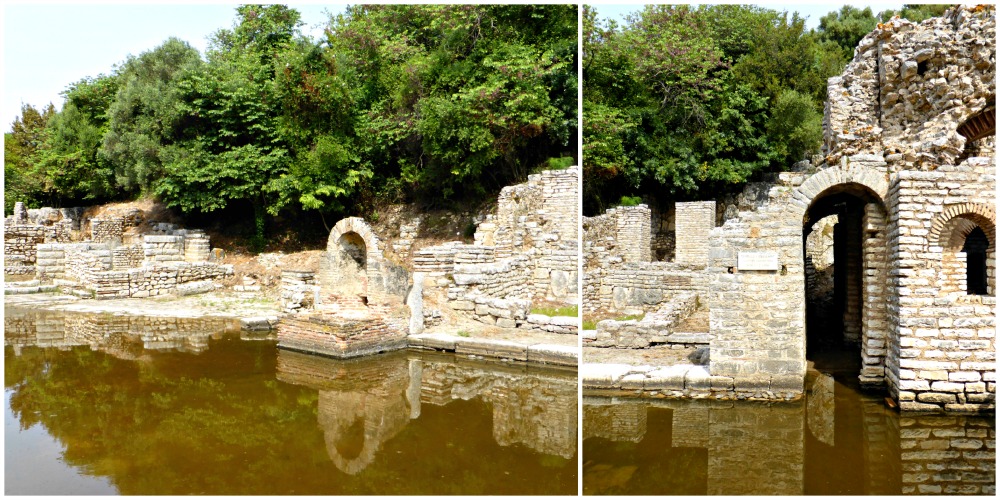
Along the Sanctuary of Asclepius
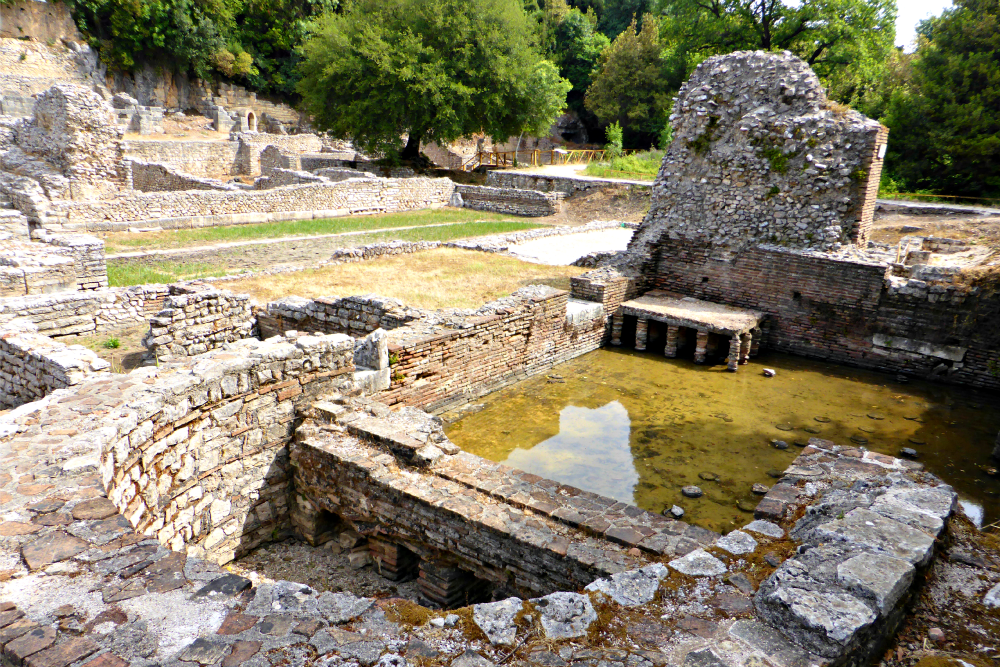
THE THEATRE
Discovered in 1928-30 by the Italian archaeologist, Luigi Maria Ugolini, the theatre was originally built in a Greek-style. It was used by worshippers and priests of the Sanctuary for religious ceremonies and public discussions.
The theatre was then rebuilt and enlarged in the 2nd century AD in the Roman style and was the centerpiece of the town.
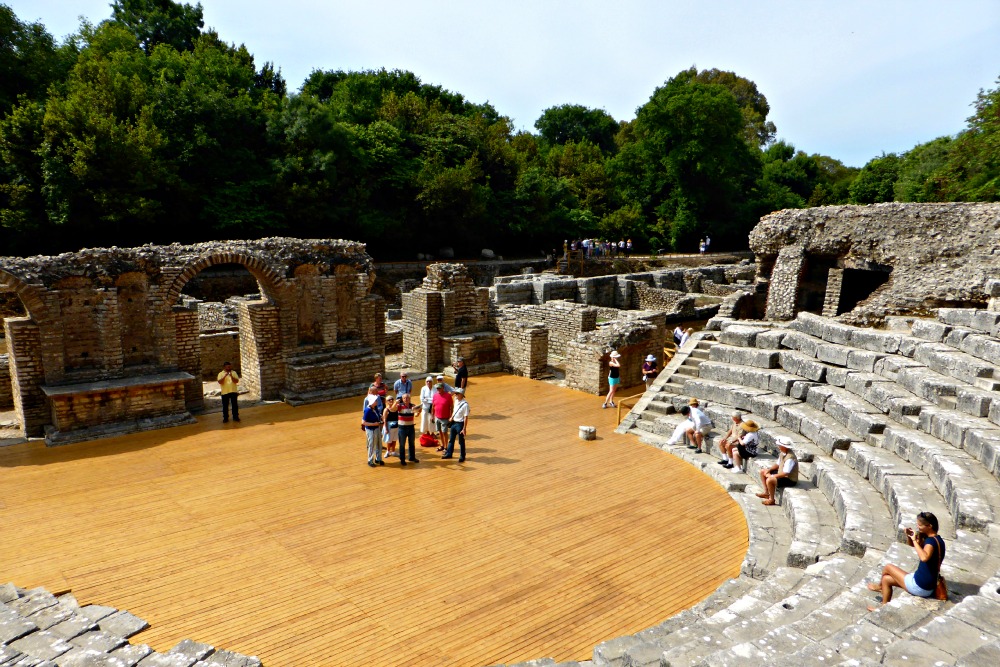
CHANNEL-SIDE CITY WALL AND TRICONCH PALACE
A little further along the trail, we veered off along a path towards the river to see some remains of the city wall along the channel and the Triconch Palace.
Because of the dwindling power of the Roman empire in the West, there were substantial changes to Butrint to help protect it. In the 6th century AD, this new defensive wall was built that stretched along the Vivari Channel. The access to the channel was maintained with the upkeep of earlier built gates- the Lake Gate and Water Gate.
The remains of this part of the city wall were badly overgrown and dilapidated but were conserved by local masons in 2007-11. Now the trails through the woods allow visitors to visit the length of the fortification.
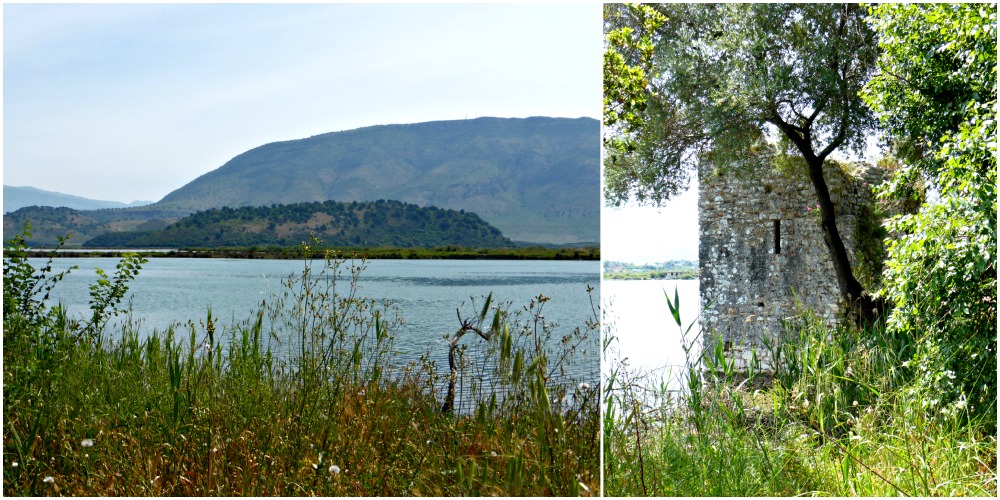
Remnants of the City Wall along the Vivari Channel
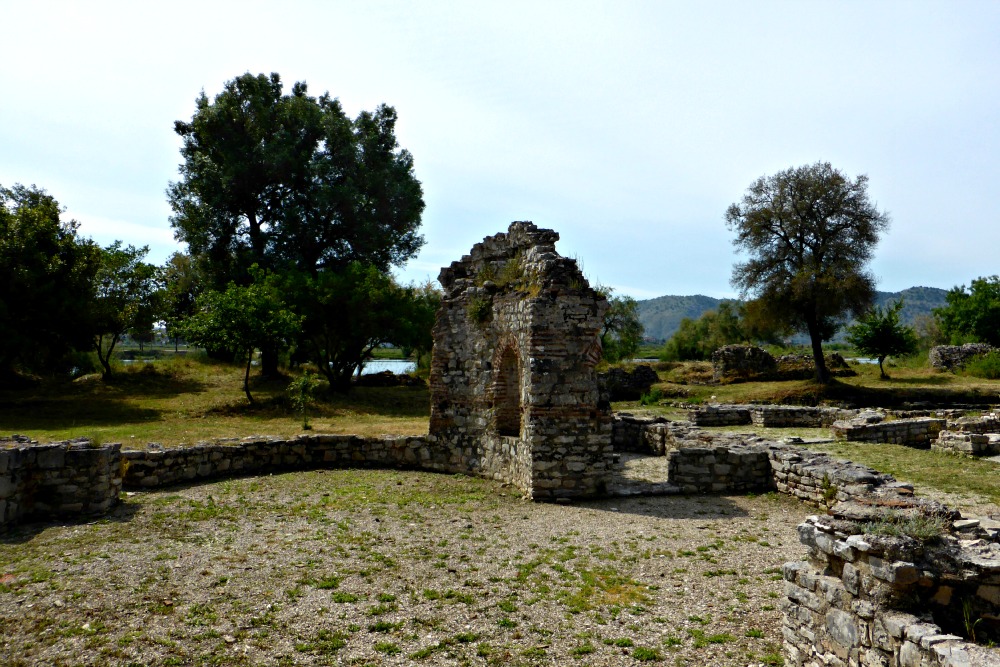
Remnants of Triconch Palace
THE GREAT BASILICA AND BAPTISTRY
Constructed in 6th century AD, the Basilica and Baptistry were made for Butrint’s bishop. This was my favourite stop along our tour as the Basilica is just beautiful set among the trees with the blue sky peering through its arched windows.
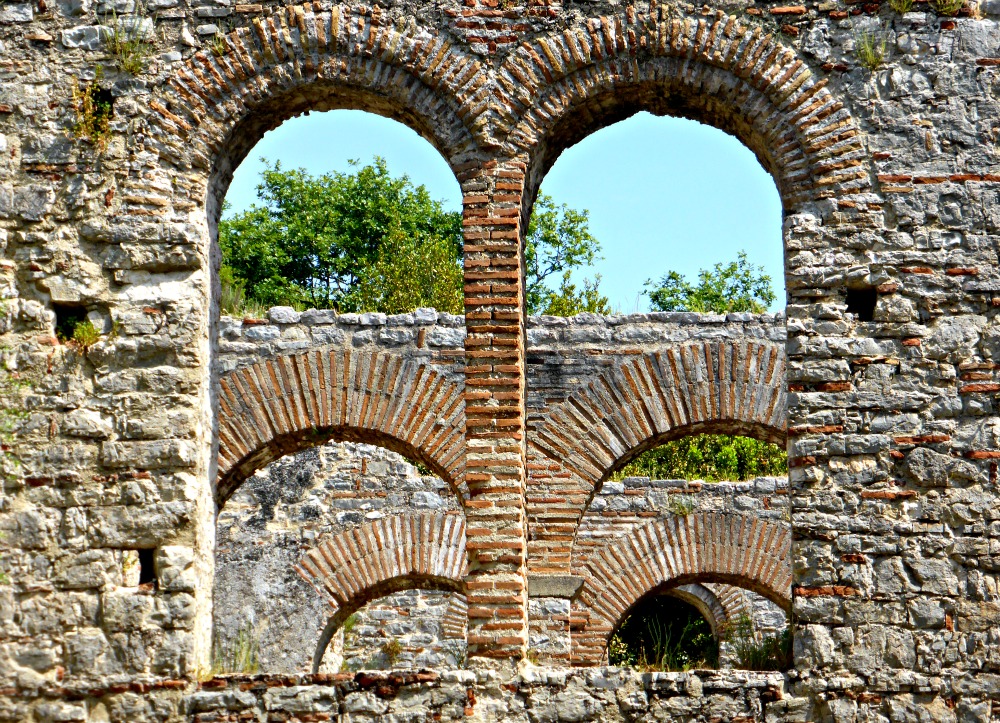
The original building would have had three aisles separated by colonnades of columns, some of which can still be seen. The floor was paved with mosaic however all but a little section of that is now covered with gravel to protect it. There is one little section that has been cleared off in the corner for visitors to see and I can imagine how beautiful it must have been. This photo from the Butrint Foundation website shows a similar floor design completely uncovered (let the slide show at the top of the page play through to see the photo of the floor).
In the medieval period, the Basilica was substantially rebuilt and a flagstone floor was placed over the mosaic pavement. I wonder why they chose not to let the beautiful floor show.
There have been eight other churches found in the town so far. The Basilica is easily the most impressive and worth a wander around.
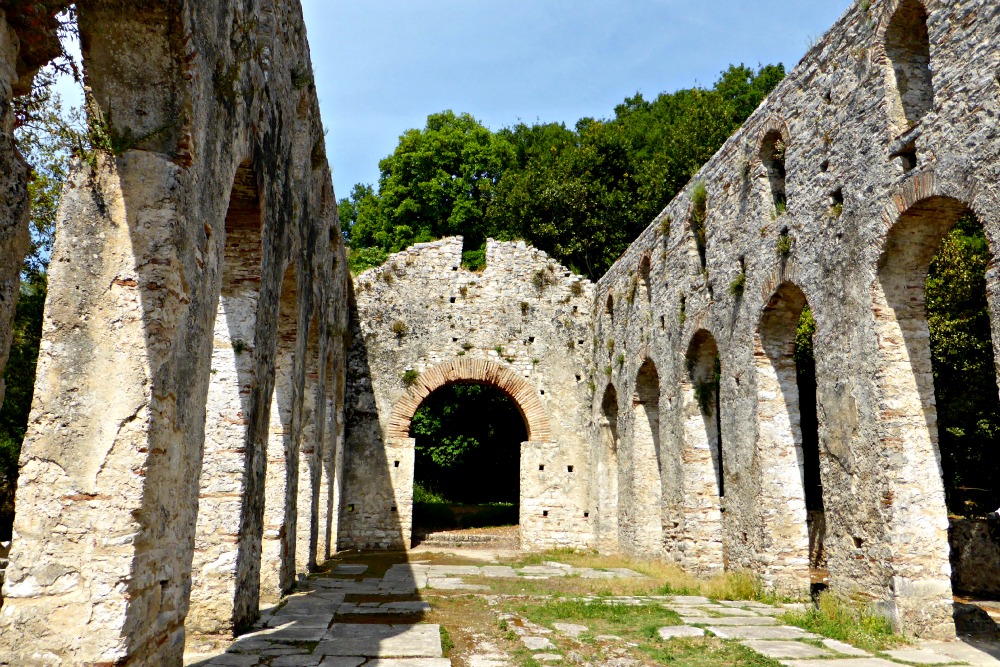
The Great Basilica
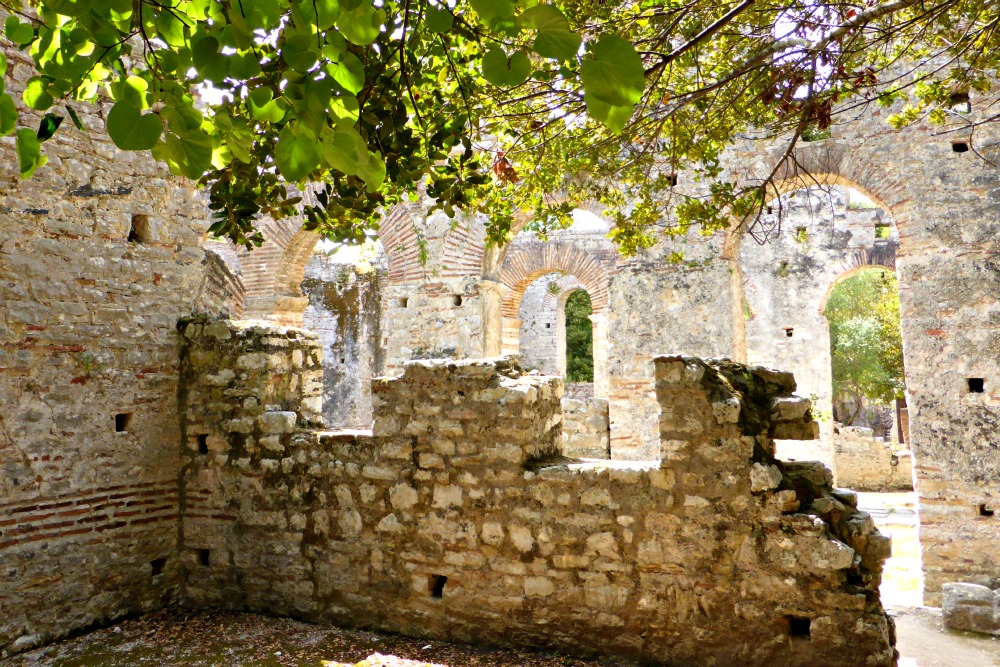
The Great Basilica
CIRCUIT WALL AND LION GATE
The circuit wall of Butrint dates back to the 4th century BC and is a great example of the engineering skills of this period. In one part there is a plumb line cut in the corner of the wall that may have been used to ensure the blocks were arranged straight or as a drain pipe. Either way, masterful precision for 4th century BC builders.
The Lion Gate in this wall gets its name from the relief above the entrance that depicts a lion devouring the head of a bull. It’s actually not part of the original wall but was placed there in the 5th century AD to reduce the size of the gate to make it easier to defend.
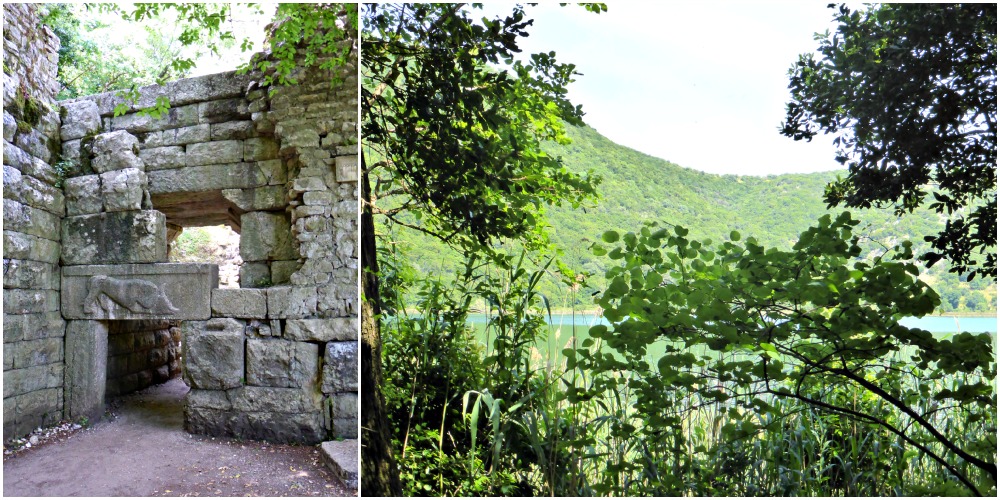
While the highlight of Butrint National Park is definitely the archaeological site, it is also a great place for nature lovers who can visit to see the lakes and wetlands, along with rare species of birds and plants.
RESOURCES | PLAN YOUR TRIP TO ALBANIA
Some of the links in the post above are affiliate links. This means if you click on the link and purchase the item, we will receive an affiliate commission but this does not affect the price to you. Please read our full disclosure policy here.
